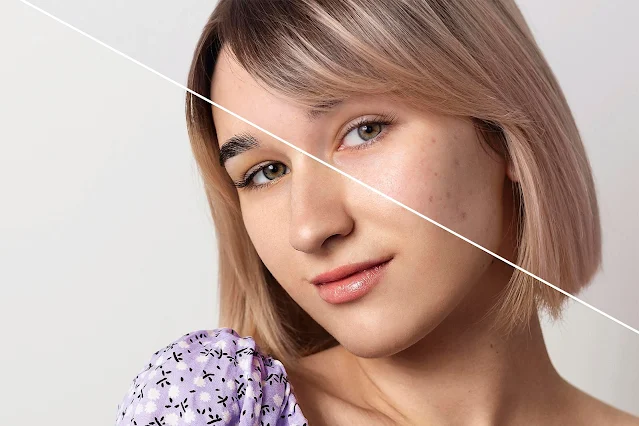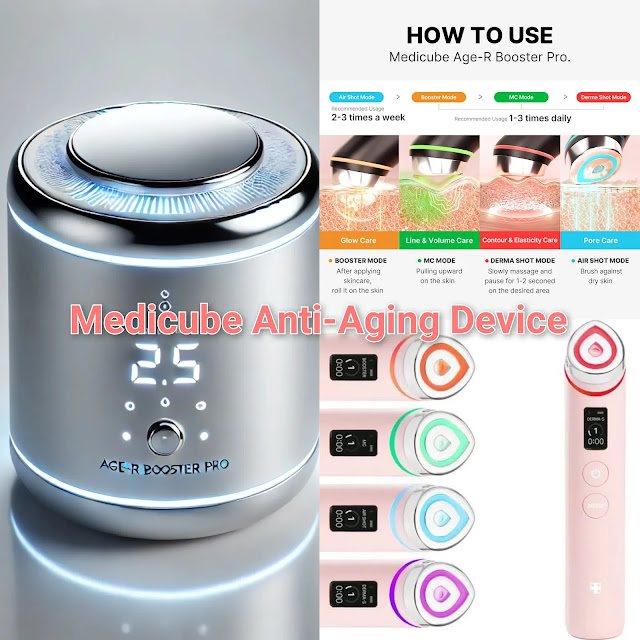Understanding the Growth Factor in Skincare:
A Comprehensive Guide
Introduction:
In recent years, skincare enthusiasts and professionals alike have been buzzing about a revolutionary ingredient known as growth factor. But what exactly is it, and how does it benefit our skin? In this article, we'll delve into the science behind growth factors, their role in skincare, and answer some common questions surrounding this powerful skincare ingredient.
What are Growth Factors?
Growth factors are naturally occurring proteins found in our bodies that play a crucial role in cell growth, proliferation, and repair. They regulate various biological processes, including wound healing, collagen production, and tissue regeneration. In skincare, synthetic versions of these proteins are used to stimulate skin renewal and rejuvenation.
How Do Growth Factors Work in Skincare?
When applied topically, growth factors penetrate the skin's outermost layer, where they signal cells to increase collagen and elastin production. This leads to firmer, smoother, and more youthful-looking skin. Additionally, growth factors promote cell turnover, helping to slough off dead skin cells and reveal a fresher complexion underneath.
Benefits of Growth Factors in Skincare:
1. Anti-Aging Properties:
Growth factors help combat the signs of aging by promoting collagen synthesis, reducing the appearance of fine lines and wrinkles.
2. Improved Texture and Tone:
By enhancing cell turnover, growth factors contribute to smoother, more even-toned skin.
3. Enhanced Healing:
Growth factors accelerate the skin's natural healing process, making them beneficial for individuals with sun damage, acne scars, or other imperfections.
4. Hydration and Radiance:
Growth factors can boost the skin's moisture levels, resulting in a hydrated, radiant complexion.
Common Questions About Growth Factors:
1. Are Growth Factors Safe for All Skin Types?
Yes, growth factors are generally safe for all skin types, including sensitive skin. However, it's always advisable to perform a patch test before incorporating any new skincare product into your routine, especially if you have known allergies or sensitivities.
2. When Should I Start Using Products with Growth Factors?
While there is no specific age requirement for using products containing growth factors, they are often recommended for individuals in their late 20s and beyond, when signs of aging typically start to appear. However, younger individuals seeking preventive skincare may also benefit from incorporating growth factors into their regimen.
3. How Long Does it Take to See Results?
The timeline for seeing results may vary from person to person, but many users report visible improvements in skin texture, tone, and firmness within a few weeks of consistent use. For optimal results, it's essential to follow the product instructions diligently and maintain a regular skincare routine.
4. Can Growth Factors Replace Other Skincare Ingredients?
While growth factors offer unique benefits, they are most effective when used in conjunction with other skincare ingredients, such as antioxidants, hyaluronic acid, and SPF. Incorporating a comprehensive skincare regimen that addresses various concerns can help maximize the benefits of growth factors and promote overall skin health.
Conclusion:
In conclusion, growth factors represent a groundbreaking advancement in skincare, offering a wide range of benefits for promoting youthful, radiant skin. By understanding how growth factors work and incorporating them into your skincare routine, you can harness the power of these potent proteins to achieve a smoother, firmer complexion with improved texture and tone. As always, consult with a dermatologist or skincare professional to determine the best products and regimen for your specific needs.
Growth factors used in skincare products are typically synthetic versions of naturally occurring proteins. Some common growth factor ingredients found in skincare formulations include:
1. Epidermal Growth Factor (EGF):
EGF stimulates cell growth, proliferation, and differentiation, promoting skin renewal and wound healing.
2. Fibroblast Growth Factor (FGF):
FGF encourages the production of collagen and elastin, leading to firmer, more elastic skin.
3. Transforming Growth Factor-Beta (TGF-β):
TGF-β plays a role in regulating cell growth, immune response, and wound healing, contributing to overall skin health.
4. Insulin-like Growth Factor (IGF):
IGF promotes cell proliferation and differentiation, supporting tissue repair and regeneration.
5. Platelet-Derived Growth Factor (PDGF): PDGF stimulates cell growth and division, aiding in the repair of damaged skin tissue.
These growth factors work synergistically to improve skin texture, tone, and elasticity, while also addressing various signs of aging and damage. When incorporated into skincare formulations, they can help rejuvenate the skin and promote a more youthful appearance.
Products containing growth factors can typically be found in various skincare lines offered by reputable brands. Here are some common places where you can find such products:
1. Dermatologist Offices and Medi-Spas:
Many dermatologists and medical spas carry skincare products that contain growth factors. These establishments often offer professional-grade formulations that may deliver more potent results.
2. Specialty Skincare Retailers:
Specialty skincare retailers, both online and brick-and-mortar, often carry a wide range of skincare products, including those with growth factors. Look for retailers that specialize in medical-grade or advanced skincare lines.
3. Online Retailers:
Major online retailers, such as Amazon, Sephora, and Dermstore, often stock skincare products from various brands, including those containing growth factors. Be sure to read product reviews and descriptions to ensure you're selecting a reputable option.
4. Brand Websites:
Many skincare brands that specialize in anti-aging and advanced skincare formulations have their own websites where you can purchase products directly. This allows you to learn more about the brand's philosophy, ingredients, and recommended usage.
5. Pharmacies and Drugstores:
Some pharmacies and drugstores may carry skincare products containing growth factors. While the selection may be more limited compared to specialty retailers, you may still find quality options from well-known brands.
When purchasing skincare products containing growth factors, it's essential to look for reputable brands with high-quality formulations. Additionally, consider factors such as your skin type, specific concerns, and budget when selecting the right product for your skincare routine. If you're unsure about which product to choose or have questions about ingredients, don't hesitate to consult with a dermatologist or skincare professional for personalized recommendations.
So, here's the lowdown on how to make the most of your skincare products packed with growth factors:
1. Cleanse:
Start your skincare routine by washing your face with a gentle, pH-balanced cleanser. This helps to clear away any dirt, oil, or impurities lingering on your skin. Pat your face dry with a clean towel afterward.
2. Tone (Optional):
If you're into using toners, this is the step for you. After cleansing, apply your favorite toner to help balance your skin's pH levels and prep it for the next skincare steps.
3. Apply Growth Factor Serum or Cream:
Time to get that growth factor goodness onto your skin! Take the recommended amount of your growth factor serum or cream and gently massage it onto your face and neck using upward, circular motions. Skip the eye area unless your product specifically mentions it's safe for use there.
4. Let it Sink In:
Give your skin some time to soak up all those amazing ingredients. Waiting a few minutes allows the growth factor product to fully absorb before moving on to the next steps.
5. Moisturize (Optional):
If your skin needs a little extra hydration, follow up with your favorite moisturizer. This helps to lock in moisture and keep your skin feeling soft and supple.
6. Sunscreen (Daytime):
If you're doing your skincare routine in the morning, don't forget the sunscreen! Protect your skin from the sun's harmful UV rays by applying a broad-spectrum sunscreen with SPF 30 or higher as the final step.
7. Stay Consistent:
To see the best results, consistency is key. Incorporate your growth factor products into your skincare routine as directed by the manufacturer, typically once or twice daily.
8. Keep an Eye on Results:
Pay attention to how your skin responds over time. You might start noticing improvements in texture, tone, and overall appearance with continued use.
Remember, if you have any questions or concerns, it's always a good idea to chat with a dermatologist or skincare professional. They can offer personalized advice based on your skin type and specific needs. Happy skincare-ing!
There are several estimable skincare brands known for their high- quality growth factor products.
Then are a many options
1. SkinMedica TNS Essential Serum SkinMedica's
TNS Essential Serum contains a patented mix of growth factors, antioxidants, and peptides designed to rejuvenate the skin and reduce the appearance of fine lines and wrinkles.
2. Neocutis Bio Serum ferocious
Neocutis Bio Serum ferocious features PSP ®( Reused Skin Cell Proteins), a personal mix of growth factors, cytokines, and interleukins deduced from dressed fetal skin cells. It helps to ameliorate the appearance of growing skin and promote a further immature complexion.
3. Replenix Pure Hydration planking Lip Treatment with Peptides
This lip treatment from Replenix contains a mix of peptides, including growth factors, to hydrate and rotund the lips while reducing the appearance of fine lines and wrinkles around the mouth.
4. SkinCeuticals Metacell Renewal B3
SkinCeuticals Metacell Renewal B3 is a featherlight moisturizer formulated with niacinamide,tri-peptide concentrate, and glycerin to ameliorate the appearance of early signs of aging and promote cell development for smoother, more radiant skin.
5. Regenica Rejuvenating Dual Serum
Regenica Rejuvenating Dual Serum contains MRCx ™ complex, a personal mix of growth factors, cytokines, and proteins deduced from adult stem cells. It helps to ameliorate the appearance of fine lines, wrinkles, and uneven skin tone.
Before choosing a product, it's essential to consider your skin type, enterprises, and any disinclinations or perceptivity you may have. also, consulting with a dermatologist or skincare professional can help you elect the stylish growth factor product for your individual requirements.
Certainly, let's explore the pros and cons of using skincare products containing growth factors:
*Pros:*
1. Anti-Aging Benefits:
Growth factors stimulate collagen and elastin production, leading to firmer, smoother, and more youthful-looking skin. They can help reduce the appearance of fine lines, wrinkles, and other signs of aging.
2. Skin Repair and Regeneration:
Growth factors play a crucial role in wound healing and tissue repair. When applied topically, they can accelerate the skin's natural healing process, making them beneficial for individuals with sun damage, acne scars, or other imperfections.
3. Improved Texture and Tone:
By promoting cell turnover and renewal, growth factors help to exfoliate the skin and reveal a fresher, more even complexion. This can result in smoother texture and improved skin tone.
4. Hydration and Radiance:
Some growth factor formulations contain moisturizing ingredients that help hydrate the skin and restore its natural radiance. This can lead to a more luminous and youthful appearance.
*Cons:*
1. Cost:
Skincare products containing growth factors can be relatively expensive compared to other skincare products on the market. The advanced technology and research involved in developing these formulations contribute to their higher price point.
2. Sensitivity:
While growth factors are generally well-tolerated by most skin types, some individuals may experience sensitivity or irritation, especially if they have allergies or sensitivities to specific ingredients. It's essential to perform a patch test before using a new product containing growth factors, especially if you have sensitive skin.
3. Regulatory Concerns:
In some regions, the use of growth factors in skincare products may be subject to regulatory oversight or restrictions. It's essential to ensure that products containing growth factors comply with regulatory guidelines and are manufactured by reputable companies.
4. Potential Controversy:
There is ongoing debate within the skincare community regarding the efficacy of growth factors and the ethical considerations surrounding their use, particularly when derived from animal sources or human stem cells. Some individuals may prefer to avoid products containing growth factors due to ethical or personal beliefs.
Overall, while growth factors offer promising benefits for improving skin health and appearance, it's essential to weigh the potential pros and cons and consult with a dermatologist or skincare professional before incorporating these products into your skincare routine.
Disclaimer
I must clarify that the information provided in this conversation is for informational purposes only and should not be considered medical advice. Skincare routines and product choices should be tailored to individual needs and preferences. Before starting any new skincare regimen or using products containing growth factors, it is advisable to consult with a dermatologist or qualified healthcare professional, especially if you have any underlying skin conditions, allergies, or concerns. Additionally, it's essential to carefully read product labels, follow usage instructions, and perform patch tests as recommended by the manufacturer. I am here to provide general information and guidance, but any decisions made based on this conversation are at your own discretion.
























Comments
Post a Comment